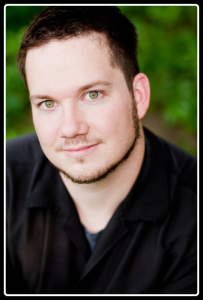 I’ve spent the last month talking about books I read in a Category Fiction class and everything I learned from reading them. The class was designed perfectly to create that experience, and I knew it from the very first day, when Professor Chester said,
I’ve spent the last month talking about books I read in a Category Fiction class and everything I learned from reading them. The class was designed perfectly to create that experience, and I knew it from the very first day, when Professor Chester said,
I want you to analyze these books critically. I want you to recognize that, for whatever reasons, these books got published. These books found an audience. These books sold. I don’t want to hear whether or not you liked it. I want to hear a thoughtful analysis of the books. For the next few months, I don’t want you to read like readers. I want you to practice reading like writers.
That little speech stuck with me. It made sense, and I followed through on that advice with a semester full of incredible learning experiences (often, as I’ve said, buried deep in books I didn’t like at all).
Die Trying
It wasn’t until the end of the semester, until I read Die Trying, that I realized I had, perhaps, taken her advice too far. As I said, I really thought I liked Dragon and Fink and Games and Curse, but when I got to Die Trying, I realized I most liked those others “as a writer.”
When I read How to Train Your Dragon, it reawakened in me the desire to tell the fantasy stories that got me writing in the first place. I got home from our class discussion of it and dusted off the manuscript of my own dragonrider novel, Taming Fire.
When I read Jeremy Fink and the Meaning of Life, I got inspired to finally seriously try my hand at Young Adult fiction. Hunger Games made me want to play around in a post-apocalyptic world of my own, and A Curse Dark as Gold made it seem incredibly fun to try to write a fairy tale with a modern technique.
Writing Books that Readers Want to Read
When I got to the end of Die Trying, for the first time all semester, I thought to myself, “I’ve got to read more books by this guy!” I went straight to Amazon and grabbed the sequel (and the prequel, too).
I can name four other books from the reading list that I liked, and every one of them is by an author with more books on the shelf (and often more books in the series), but all any of those did was make me want to write. Die Trying made me want to read more.
Maybe it’s a matter of market. Maybe I just happen to like Thrillers (although I would’ve self-identified with Fantasy and Science Fiction way before I got to Thriller).
Maybe it has to do with follow-through and hitting hard (Lee Child certainly does go big). But I think, in the end, it all comes down to the same thing: communicating with a real audience — understanding their expectations, responding to their needs, and building story structures that will thrive in their environment.
The good news (as any number of hand-crampingly-long lists of sub-sub-sub-genres illustrated) is that there are as many audiences for an author to choose from as there are categories for readers to stick to. It takes a little bit of education, and a little bit of effort, but every story can find a real audience, and every book needs real readers to survive.
This course challenged us to read like writers, but now that it’s over the ultimate lesson is just audience analysis, all over again. Write for readers, and the rest will take care of itself.





